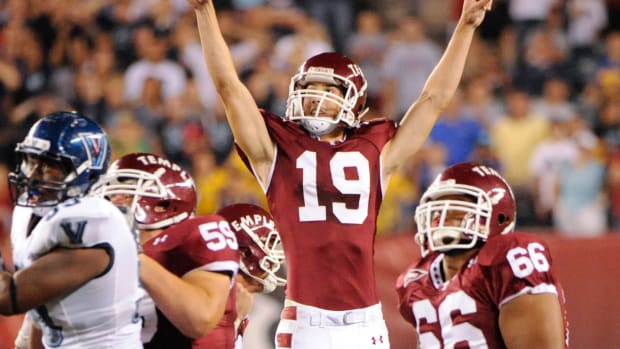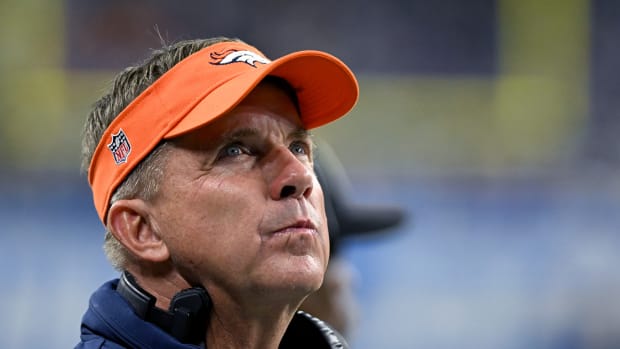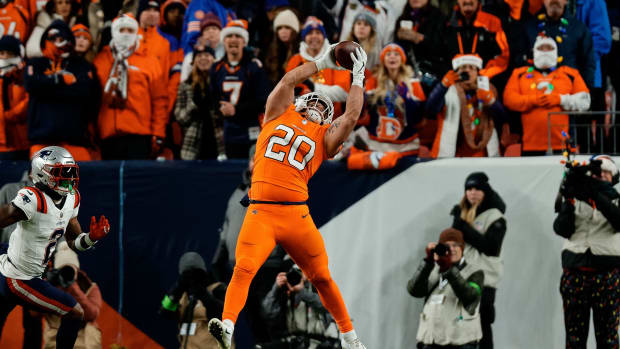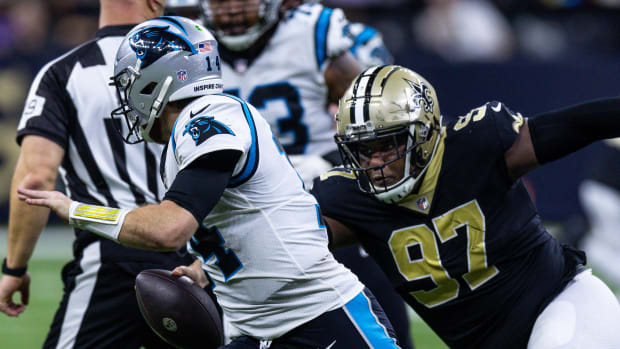How Return-To-Play Agreement Impacts Broncos' Roster Decisions
The NFL and NFL Players Association have agreed to the major points of a plan to return to play for the 2020 NFL season.
The Athletic's Lindsay Jones covered some of the major highlights in a Twitter thread.
Agreeing on these points was crucial to getting training camp underway, with rookies for the Denver Broncos and most other teams now reporting.
But what does it all mean for the Broncos, now and in the future? Let's consider a few points.
Salary cap floor for 2021 of $175M: This means that the base cap will be no lower than $175M next season, but could be higher, depending on actual league revenues for 2020.
The Broncos are in solid shape cap-wise going into 2021, with an estimated $29M in cap space should $175M be the base, and including carryover. However, that figure could change depending on final adjustments to the roster this season.
Keep in mind that cap carryover is currently based on only the top 51 cap hits counting at this point. Once the final rosters are set, all cap hits apply, meaning we'll know the real picture as it pertains to potential carryover.
But it might mean a better chance to keep the likes of Jurrell Casey and A.J. Bouye in 2021, provided they play at a high level this season.
For those wondering, the Broncos get no benefit when it comes to Justin Simmons. If they tag him again in 2021, it will still be based on the 2020 tag. That means the estimated $13M figure to tag Simmons in 2021 is still in effect.
Cut to 80 players: Last season, there was just one cut-down to 53 players after the preseason. There's now a new cutdown date, as Jones explains, in which teams may either trim the roster to 80 before veterans report, or trim down to 80 by Aug. 16.
This means 10 players will be gone well before final rosters need to be set. It means fringe players, whether they are veterans on the bubble, journeymen or undrafted rookies, will need to be quick in making a good impression.
It could mean that tight end Jeff Heuerman is on a quicker notice, given how many younger, cheaper tight ends on the roster. Or it might mean an undrafted rookie such as cornerback Essang Bassey will have a tougher time getting past more experienced players to a spot on the 53-man roster.
Practice squad expansion: The increase to 16 players on the practice squad likely means that certain younger players start the season there, with a chance to get called up to the active roster later on.
Those candidates include late-round draft picks in 2020, undrafted free agents and players whose first season was 2019 and were either a late-round pick or an undrafted free agent, whether or not they spent part or all of last season on the practice squad.
On one hand, these players may find it harder to make the active roster at first. On the other hand, they get a chance to make the active roster later, should a player be sidelined because of COVID-19 or an injury, or if a veteran simply fails to produce.
But it's possible players such as Juwann Winfree, a 53-man roster member last year who was often inactive, or a seventh-round pick this year such as Tyree Cleveland, might be on the practice squad to open the season.
Also, the expanded practice squad makes it more attractive to add a third quarterback there, meaning Brett Rypien and Riley Neal could simply be competing for a practice squad spot.
Most of all, with six players allowed on the practice squad with an unlimited number of accrued seasons, a team could add a veteran player to the squad. Chances are, though, that such players are more likely to be those who have fewer years of NFL experience. But it could open the door for somebody like Jake Butt to stick around.
Acclimation period: With no organized offseason activities held, and players getting limited time for informal team activities, it made sense to give players a specific schedule to get up to speed.
One thing to keep in mind is that doctors, athletic trainers and others recommend is that athletes get time to improve their conditioning before being immersed in larger-scale workouts, so they lower their risk of injury.
Of course, there will be no preseason games, which means it's going to be an uphill climb for certain players to make the roster. We've seen multiple instances of Broncos players who got their big break thanks to an impressive performance in the preseason (Terrell Davis may be the most noteworthy example, and Shelby Harris is a more recent example).
But no preseason games also means less evidence for other teams to examine if they want to claim a young player off waivers. So it's possible the Broncos may be able to slip more players they like onto the practice squad than they might otherwise.
I'll talk more this weekend about specific players and positions that could be impacted because of the modified training camp approach.
But getting some of the major issues out of the way can give Broncos fans a better picture about the upcoming season. There's more questions to be answered, of course, but some important questions may be better understood now.
Follow Bob on Twitter @BobMorrisSports and @MileHighHuddle.




